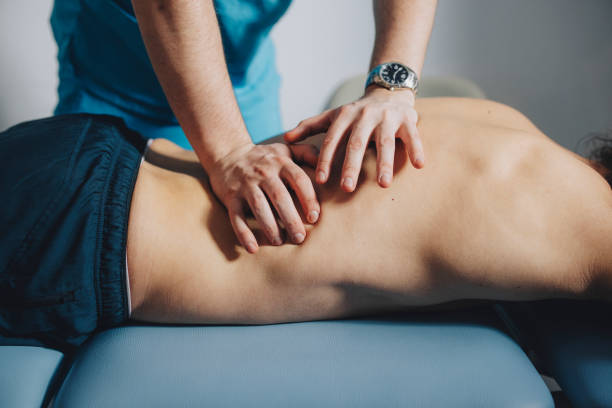How Pilates and Physiotherapy Treat Various Conditions
Pilates strengthens core muscles, improves flexibility and increases body awareness. It also improves lung capacity and balance, reduces stress and improves posture.
After any injury, our bodies often develop compensatory movement patterns to take pressure off the injured area. Including Clinical Pilates in your treatment plan can help address these long-term patterns and prevent future injuries.

Back pain
Physiotherapy addresses imbalances, improves strength and supports movement patterns to reduce pain and discomfort. Clinical pilates is another option that can complement a treatment plan for back pain.
Pilates is well known for its core and spinal strengthening exercises that help to protect the spine and reduce the load on painful structures. It can also build up muscle tone in areas that may have become weak through injury or lack of activity, which can also help reduce pain and support the body in its natural alignment.
While some Pilates movements are not suitable for people with back problems – for example, rolling (like the ball exercise) or twisting and extreme flexion of the spine can be too jarring for the back muscles – a lot of the Pilates repertoire is very effective in strengthening the deep spinal muscles to help support the back and improve posture. It can also increase awareness of poor posture and movement patterns that contribute to back pain, so that people can correct them in their everyday lives. This is particularly important for those who have a job or sport that requires prolonged sitting for long periods of time, as this type of posture increases the risk of developing back pain and weakness.
Knee pain
The combination of Optimise Health physiotherapy and reformer pilates Toowomba can improve the healing process for knee injuries. They both strengthens muscles around the injury and improves flexibility, mobility and spinal stabilisation – all factors that contribute to improved healing.
Knee pain is often caused by imbalances in muscle activity, such as overworking the quadriceps (front of the thigh) and underworking the hamstrings (back of the thigh). Pilates exercises target these muscles, helping to balance muscle strength across the leg.
Moreover, regular exercise is known to boost the production of anti-inflammatory chemicals called cytokines, which help to control inflammation and swelling in injured tissue. Having a strong core also helps prevent knee pain by improving posture, movement patterns and overall body stability.
Having a physiotherapist who is trained in Pilates is an added bonus as they can provide you with specific exercises to do at home to prevent your knee pain from returning or progressing. They can give you confidence that you are doing the right exercises for your condition, leading to improved recovery and preventing future injury.

Hip pain
Pilates strengthens the hip muscles and increases mobility and flexibility in the area. This can alleviate that nagging pain. It also helps improve posture and strengthens the core. It can be done on a mat or specialised equipment such as the Pilates Reformer.
The hip joint can be affected by traumatic injury or ‘wear and tear’ overuse injuries such as joint capsule synovitis, cartilage tears and piriformis syndrome (where the sciatic nerve becomes hypersensitive in the buttock region and refers symptoms into the deep and outside hip areas).
Physiotherapy treatment can include specific exercises, stretching, dry needling/joint mobilisation, manual therapy or pain medications.
Combining physiotherapy and Pilates can be a great way of managing your injuries, improving performance and preventing future injury. It’s a highly effective and efficient combination that will allow you to return to your full fitness quickly and efficiently. It can also help you to reach your fitness goals quicker and achieve long term results. Contact me today to get started!
Shoulder pain
Shoulder pain is one of the most common injuries Physiotherapists treat. It is often caused by repetitive overhead movements and faulty biomechanics which can lead to impingement or ‘squishing’ of the rotator cuff tendons. This can result in a painful condition known as tendonitis.
The rotator cuff is the primary stability muscles of the shoulder joint. Activating and strengthening these muscles can improve shoulder stability and reduce the risk of injury. In a recent study Clinical Pilates was compared with conventional exercise in 33 patients who had shoulder pain. The results showed that the Clinical Pilates group had a significant improvement in all assessments used to measure pain and disability.
Pilates is a great tool for the prevention and management of shoulder pain. It strengthens the shoulder stabilising muscles and works to improve their coordination with the rest of the body reducing the likelihood of overloading the shoulder joint.
Neck pain
Physiotherapy can treat injury, pain and a variety of conditions including neck pain. Physiotherapy has many techniques and exercise is one of them. Physiotherapists prescribe exercises for people with injuries and they also recommend Pilates to help people prevent injury and improve their general health.
Clinical Pilates is a body-strengthening method that focuses on controlled movements, posture and breathing. It is an effective form of treatment for a variety of conditions, and combines core strength with flexibility and mobility. Physiotherapists are increasingly using it to treat patients who have neck pain.
Studies show that 12 weeks of Pilates exercise improves neck pain, range of motion and muscle performance compared with standard therapy. It also reduces fear-avoidance and improves balance, movement control and body awareness (proprioception). Physiotherapists use Pilates exercises for neck rehabilitation to strengthen postural muscles and promote proper spinal alignment. They may also include gentle neck stretches to relieve tension and help restore mobility and balance.

